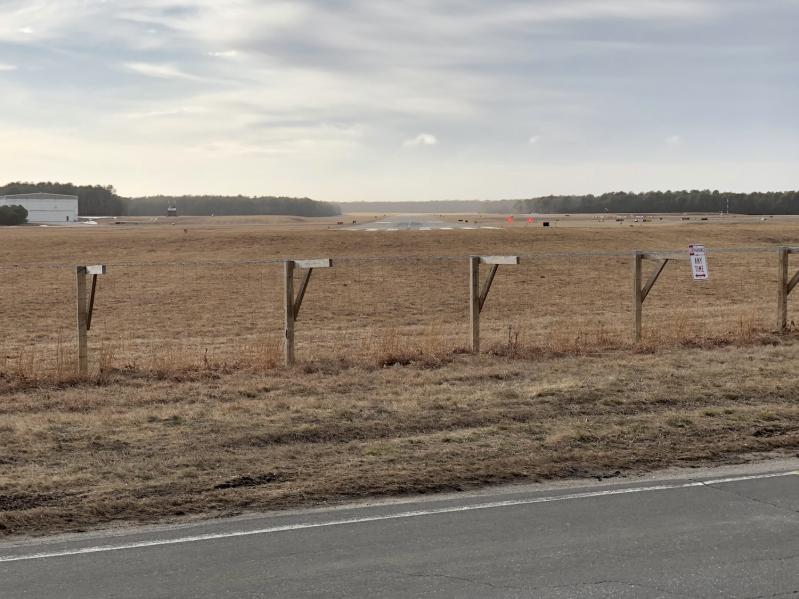Consultants to East Hampton Town issued recommendations on Tuesday for a “new” airport on the site of the existing East Hampton Airport that they said could impact 40 percent of takeoffs and landings but address upward of 70 percent of complaints. The recommendations, if implemented, would impose a curfew and otherwise limit activity based on an aircraft’s operator, its noise, and its size under a prior-permission-required framework.
The restrictions could be modified based on data the town collects during the 2022 summer season, when air traffic is heaviest, the board was told.
Initial reaction, from the airport’s supporters and opponents alike, was less than enthusiastic, based on several who called in to the board’s virtual meeting.
The board voted on Feb. 17 to delay its planned deactivation of the airport until May 17. After being closed for 33 hours, the airport is to reopen on May 19 as a private-use facility with a prior-permission-required (P.P.R.) framework in place, meaning pilots will need advance clearance to use the airport.
Following the September expiration of federal grant assurances, which returned control of the airport to the town, the board is moving to address the thousands of airport-related complaints registered annually by residents across the East End and from as far as New York City.
Andrew Barr of the Cooley law firm, which is advising the board, described proposed restrictions aimed at balancing residents’ quality-of-life concerns with those of airport users. The P.P.R. framework, he said, will give the town maximum flexibility to that end as well as to react to unintended consequences of newly enacted restrictions. “It will provide the town the ability to look at what happened over the season,” he said, and allow it to make changes to maximize the intended impact.
At the end of the summer season, consultants will assemble a draft generic environmental impact statement, a requirement under the New York State Environmental Quality Review Act, for public comment, after which the board “can start to finalize what a P.P.R. will look like.”
Time-based permission, or a curfew, was proposed. The airport would be closed to operations from 8 p.m. to 8 a.m. on weekdays, Mr. Barr said, and from 7 p.m. to 9 a.m. on weekends and holidays. By itself, this restriction would impact just 13 percent of operations, Mr. Barr said, “but they’re some of the most complained-about operations,” as 40 percent of complaints are about early-morning or late-night activity.
Next was a restriction limiting an aircraft operator — the entity or individual operating the aircraft — to one daily round trip, meaning a commercial aircraft could come to the airport once per day, Mr. Barr said. Practically speaking, this would apply to “nearly all helicopters, jets, and seaplanes,” he said. “The goal is to reduce the frequency on the very heavy days. That’s when there have been the most pain points, but at the same time this would allow almost all operators to come and go once” based on an aircraft’s registration number.
This can be tracked and enforced with a system already in place, Mr. Barr said, with the airport manager and town board notified in real time when a violation occurs.
During the summer season, there are days when the same aircraft has landed at the airport as many as seven times, he said. Limiting aircraft to one daily round trip would impact 13 percent of total operations, one- quarter of commercial operations, and around 35 percent of complaints, Mr. Barr said. “On the busiest days of the year, the town would get the most relief with this type of permission.”
Mr. Barr also suggested the town restrict aircraft deemed noisy, defined as greater than 91 decibels, to one round trip per day. This, he said, would affect 6 percent of operations, eliminate 11 percent of “noisy” operations, and address 20 percent of complaints. “This is really targeted to aircraft that may not fall into the commercial-operator category but still are especially inconvenient to the community based on noise,” Mr. Barr said.
Lastly, aircraft could be limited by size, in order “to keep the largest jets from impacting the community,” Mr. Barr said. He proposed a maximum takeoff weight of 50,000 pounds, which he said is generally a jet designed to carry 12 or more passengers. This would impact 2 percent of operations and 1 percent of complaints, “but those 2 percent of operations are going to be the most burdensome on the airport.” The size limit could be reduced if it did not address the problem, he said. As an added benefit, limiting the size of aircraft would extend the life span of runways and taxiways.
At a yet-to-be-determined time, the airport will phase out lead-based fuel sales and ultimately aircraft that use lead-based fuel, Mr. Barr said.
A P.P.R. framework “is not a ban on any aircraft,” nor any particular operator, he said. “Instead, what we’re suggesting is a balanced approach that will reflect what the community is willing to have at the airport but at the same time keep the airport open for business and ensure the aviation interests and stakeholders can still access the East End in a safe way.” It would have little impact on noncommercial aviators during non-curfew hours, he said.
During public comment, Barry Raebeck, director of the Coalition to Transform East Hampton Airport, was critical of the proposals, suggesting instead a curfew of 4 p.m. to 10 a.m., a blanket ban on aircraft on Saturdays, and an immediate ban on use of leaded fuel and the aircraft that rely on it. “The community continues to suffer a great deal,” he said. “This is a weak, pitiful response to the problem.” In the face of an accelerating climate crisis, the town is continuing to support environmental destruction, he said.
Laraine Hayes of East Hampton called the recommendations “a de minimus change” in airport operations that are “causing such noise pollution to the entire community.” Elena Loreto, president of the Noyac Civic Council, said that “the people of Noyac are fed up,” describing the community as “the dumping ground for noise.” Noyac is East Hampton’s neighbor, she said. “What are you thinking?”
John Kirrane, also of the Noyac Civic Council, said that his optimism “that this would be the start of something good” had yielded to a sense that “an opportunity has been lost.” The town, he said, is “snatching defeat from the jaws of victory.” He predicted “a protracted battle” with commercial aviators who he said are disingenuous when talking about compromise with beleaguered residents.
Kathryn Slye, a persistent critic of plans to restrict operations at East Hampton Airport, was also critical of the proposed restrictions. The proposed P.P.R. framework, she said, is “clearly designed to eliminate local, small plane usage.”
In a statement provided to The Star after the meeting, Loren Riegelhaupt, a spokesman for the Eastern Region Helicopter Council, said that the proposed restrictions “will not solve any issues, but will instead only push the problems to neighboring communities like Montauk, Westhampton, and the North Fork. What’s most troubling is that we do not have the assurance that these restrictions are legally permissible” as the Federal Aviation Administration “still has not provided any clarity on the regulations. The F.A.A. has a duty and responsibility to provide these answers and we urge the agency to immediately give clear guidance so that all parties can move forward and find common-sense solutions.”




